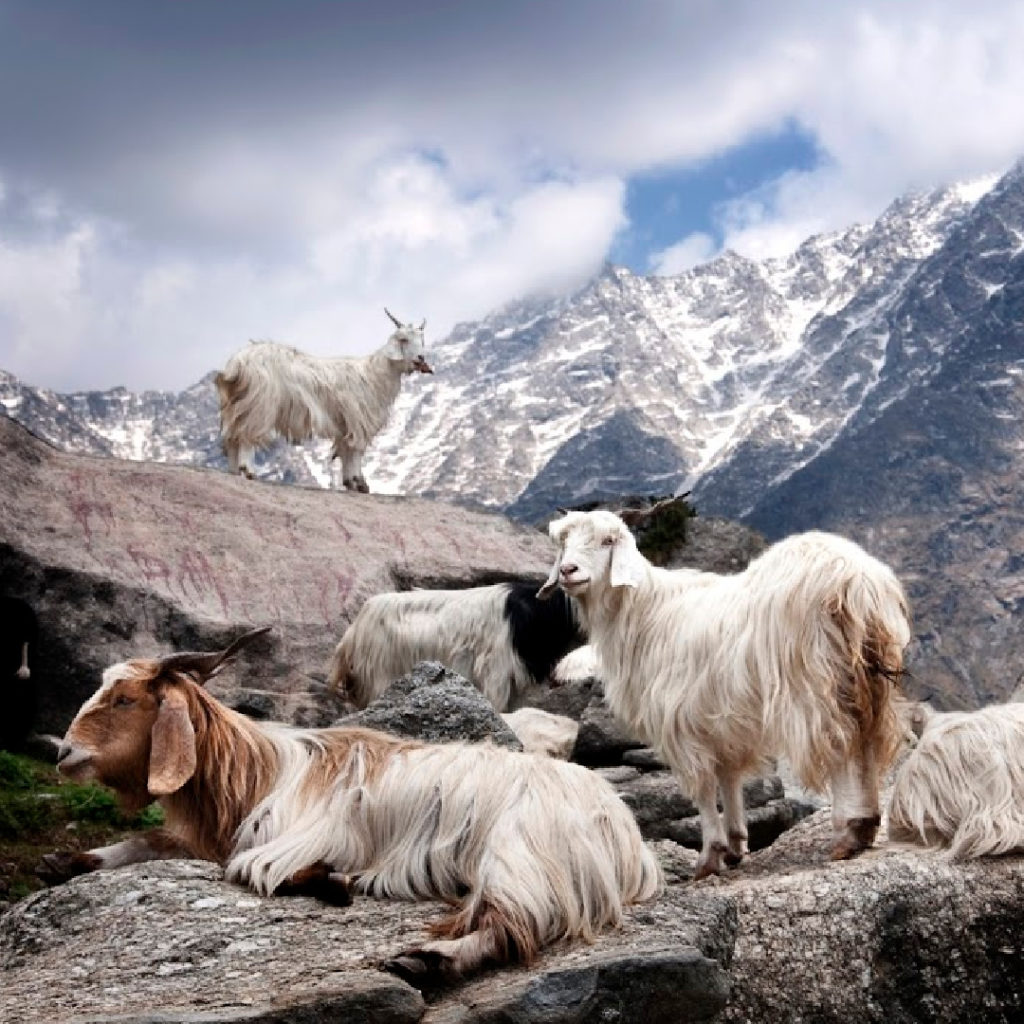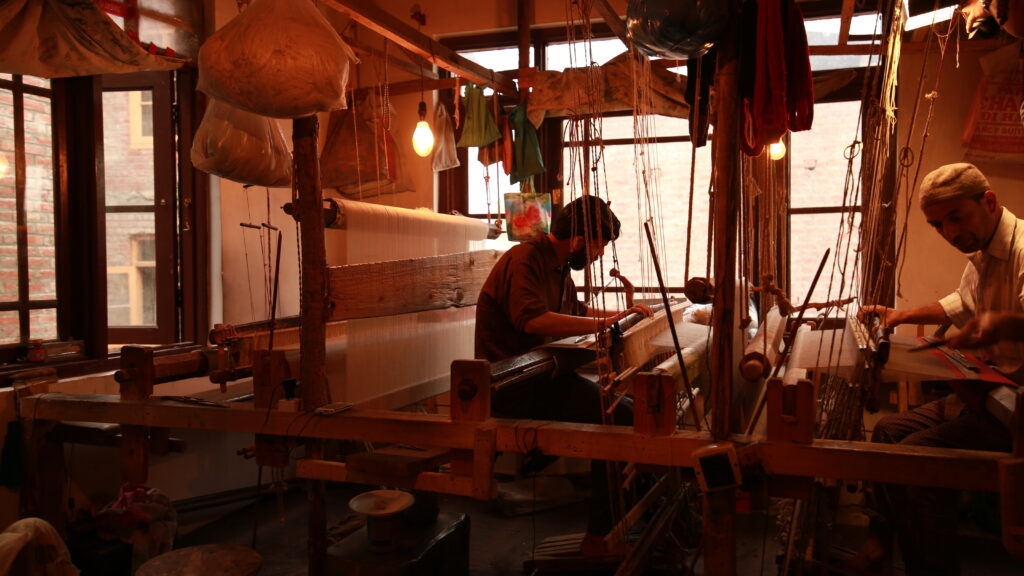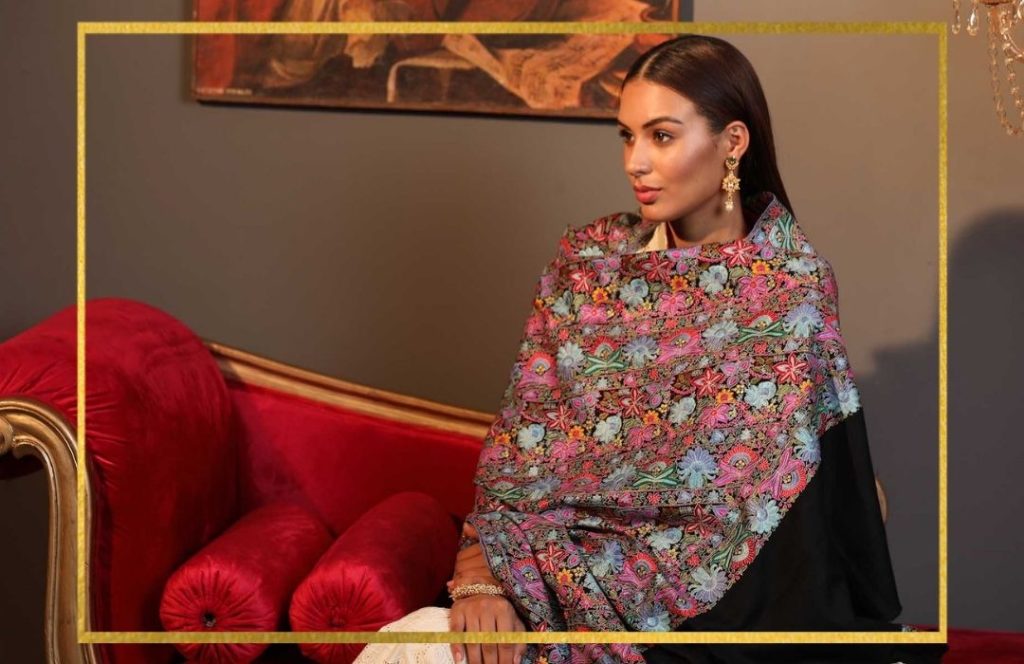Luxury isn't only what we wear. Accessorizing in fine products is also being luxury loving. And we never believe that living a luxurious life isn't very good in the long run. After all, everyone deserves pampering, and what is more pampering than wearing the best accessories of all times. We found something that is timeless, finest and of course higher on the price scale. Cashmere scarves
Cashmere scarves come from Kashmir, and are a luxury in itself. These scarves are believed to have come into existence in the 15th century when a Persian traveler discovered them. The finesse of Cashmere wool, the softness and feathery light weight of this luxury animal hair surprised the traveler, who later introduced the same in the Royal courts of the time. This is when the processing of fine Cashmere wool took pace, and factories were set up to transform wool into shawls, scarves and wraps. Since then, there has been no turning back, and Cashmere scarves have managed to swoon individuals around the world with their luxurious opulence and poise.
Let us dig deep into the origin of Cashmere, and know more about this plush fibre that makes an unforgettable impression on even those who have just one look at it.
What is Cashmere?
Ever went shopping for winter wraps, and accidentally touched the softest thing on earth? There is a high chance that you have had the first experience with Cashmere. Cashmere scarves are soft, fine, lightweight, and hence a luxury to own. But the huge price tags often seem worrisome for several individuals who might not know what Cashmere is.
Cashmere is often called Cashmere wool. But surprisingly it is not wool. It is the hair of a rare goat. These goats grow this exceptionally soft and fine fleece as a defense mechanism against freezing cold. But they grow such a small quantity of the same that 2 or 3 goats have to be combed to get fibre for a single wrap. This, and many more reasons to justify the high prices of Cashmere. Even though its patrons have never cared about its high price, we still have defense for its unexpected price tags. Let's know more about this luxury fibre.
Origin of Cashmere Scarves
The term Cashmere is an anglicization of Kashmir, the hometown of Cashmere, coined by Europeans. It was first discovered by Shah E Hamdan, a Sufi saint, who visited the valet from Persia. As he realized the luxurious texture and feel of Cashmere, he ordered socks to be made out of this wool type. This pair of exceptionally plush socks was gifted to the then king Zain ul Abideen, who being highly impressed ordered manufacturing units to be established for the processing of raw Cashmere.
As Cashmere scarves from Kashmir gained prominence, it was shortly exported to Europe, especially France and Scotland. Craftsmen in these countries later came up with their own version of Cashmere products. Yet their wealthier population still ordered wraps from Kashmir, even if it meant paying heavy prices. Upper-class British women prized the fabric for its lightweight texture and subtle warmth. (Pure Cashmere is up to 8 times warmer than sheep’s wool, despite being a lot lighter than the same).
It is believed that from the 1500s to the early 1900s, Iranian and Indian kings and emperors used Cashmere scarves in their religious ceremonies. If a ruler presented a Cashmere wrap to another, it would mean acceptance of a condition and established a hierarchy between the giver and the receiver.
Where do Cashmere goats live?

Changthangi goat is a medium-sized domestic goat breed. It is raised for its wool production. These are most often white in colour but also seen in black, gray, ash, or brown. Changthangi goats have large curved horns and long coats. They are recognized by short and straight ears and the thick undercoat that helps them survive the cold.
These goats are found in China, Mongolia, Tibet, Bhutan, Nepal, and the Changthang valley of Ladakh. The finest Cashmere is the one found in Ladakhi goats, also known as Changthangi goat. It is used to make Kashmiri Pashmina shawls.
White is the most prevalent colour as far as the Cashmere goats are concerned. But their shades may vary. Female goats are around 30 kgs in weight, whereas males are 30 kgs in just 3 years. The goats give just 150-250 grams of Cashmere per year, making the fire rarer. It takes the wool from 3 to 4 goats to prepare one Pashmina shawl.
Cashmere goats are alert and cautious, not placid and lazy. Their temperament befits their lifestyle, where there is a risk of predation often.
Inhospitable Conditions of Ladakh
Rearing animals in the plateau of Changthang is not an easy task. The region offers extremely inhospitable conditions, where even the acquisition of basic essentials is a challenge. For centuries, the nomadic shepherds have been living there, moving their animals from one place to the other every few months, looking for fresh grazing pastures. Yet now, even this life is being challenged by climate change as well as fake Cashmere scarves exports from China, which has made life more complicated for these people, who just need basic essentials to survive
Also read: Empowering Pashmina Artisans
Why is Cashmere Expensive?

The most asked question to our fabric experts is "Why is Cashmere Expensive"? Well, Cashmere is expensive, and we feel rightful so. The Changpa tribe makes sure that the goats gently get combed during the spring moulting season. Later the collected undercoat is sorted manually and pure is separated from impure wool as well as dirt and dust. A goat produces merely 150 grams, and processing these 150 grams is a painstaking activity. It takes a few months to a year for the most highly skilled artisans to work over handlooms for preparing a single wrap. These wraps are then exported to countries all over the world and sold in hundreds to thousands of dollars. This makes Cashmere expensive, as well as one of the most demanded fabrics around the world. Here are a few more reasons which show why Cashmere scarves are expensive.
Cashmere is the king of fibres
The chilling cold in the Changthang region triggers the growth of Cashmere over the body of the goat. The wool hence grown is super soft, thin, lightweight yet exceptionally warm and cozy (when hand woven into a fabric). It is considered the king of fibres and this has been so for centuries. The diameter of one strand of Cashmere is just 12 to 16 microns. Being so fine doesn’t stop it from being one of the warmest materials on the earth and 8 times warmer than the sheep’s wool). Cashmere scarves hence made are the most luxurious wraps on earth.
How is Cashmere collected?

From the way it is manually acquired to the completion of a Cashmere scarf , every process is immensely labour intensive in Cashmere production. Raw wool is collected from the mountain ranges as soon as Spring sets. The goat is in its moulting period, and hence sheds a portion of its wool. This wool, spread all over the region as well as the portion still stuck to its body, is collected and cleaned. It is sent for processing, where it meets spinners and weavers to produce a luxury fabric. Every step is ethical, and there is no animal cruelty associated with wool collection.
There would be no Cashmere production in the world if it wasn't for the meticulous efforts of its craftsmen in Kashmir. From cleaning to spinning to weaving and embroidery, every single process is manual in the making of the world-famous Kashmiri Pashmina shawls. Cleaning takes 3 to 4 days, and then spinning takes a few months. Weaving takes another few days, and then embroidery might even take years to complete. All this time local artisans just use their skill and decades-old experience to craft masterpieces.
Also read: How are Pashmina Shawls made?
Timelessness of Cashmere scarves

Cashmere is timeless. A Cashmere scarf which is 30 years old looks as elegant as a fresh piece. This owes to the manual labour that is put into it, and the regal demeanour that Cashmere scarves exhibit. It was the timelessness of Cashmere scarves that made Empress Josephine an admirer of these and order a few hundred wraps in her life.
Rare, Limited Production of wool for making Cashmere scarves
The wool from Cashmere goats is acquired in the Spring and Summer seasons and the sale has to start in winter. Because the moulting is season-defined, manufacturers have to wait for an entire year to receive the raw wool in order to start preparing Pashmina shawls or Cashmere scarves. This limited production makes it rarer and hence valuable.
Also read: Are Cashmere scarves worth it?
The Softest and warmest yet the lightest
One of the reasons men and women alike love Cashmere scarves is the fact that these are exceptionally warm yet feathery light. When compared to the level of comfort and warmth Cashmere scarves give, one expects them to be thick and heavy. But to their surprise, a full length scarf is barely 400 grams! This means it is as lightweight as perhaps a large silk shawl. For this reason, Cashmere scarves are the first accessories that are chosen for travel as its light weighted nature helps make travel easier.
Cashmere vs Pashmina
Often the wearers of Cashmere scarves are confused between the terms Cashmere and Pashmina. The reason is that the finest Cashmere is made in Kashmir, but in Kashmir mostly individuals call them Pashmina shawls or scarves. So what is the reason behind this clash in nomenclature, lets find out.
Cashmere is the term used to define the fine hair that grows on the body of the Ladakhi goat. The wool was discovered in the 14th century by a Sufi saint - Mir Syed Ali Hamdani. Pashmina, on the other hand, is the art of transforming this fine wool to luxury wraps, shawls and scarves. But in Kashmir, the term Cashmere is used synonymously with the term Pashmina, hence making it difficult for a few customers to understand. The term Pashmina is only used in Kashmir, and India. Rest of the world knows these luxury accessories as Cashmere.
Are Cashmere scarves worth being Expensive?
As mentioned earlier, there are a several reasons why Cashmere scarves are expensive. The reasons are absolutely unique, and hence Cashmere scarves are the most pricey when compared to their counterparts. Many believe that these luxury accessories aren't worth the price. But when we researched about their acquisition, making and quality of the final products, we realized they deserve all the attention they receive.
Acquiring Cashmere is itself a challenge. Cashmere goats are found at the Himalayan ranges that lie over 15000 feet above sea level. The temperature is harsh and herders live a difficult life which has challenges every single day. In these harsh conditions, herders manage to rare the goats and acquire Cashmere wool from them. The wool is pretty rare, and one goat produces a meagre 150 grams. The wool is cleaned then, and sent for processing
The processing of Cashmere wool is yet another challenge. It take weeks, months or even years to process just one scarf made of Cashmere. It all starts from cleaning the Cashmere wool which is handspun post cleaning. Hand spinning takes immense labour work where labourers sit at one place for long times and keep spinning the lumps of wool, transforming them to fibre. This fibre is later hand woven, manually, and fine, lightweight and high quality fabric is hence produced.
From the start to the end, Cashmere scarf making is sustainable. Sustainability, in addition to the other qualities, make Cashmere scarves expensive, and rightly so. Solid scarves are pretty affordable, but densely embroidered scarves are a lot expensive. High price comes from high quality, and no one ever denies it. Hence, most of the takers agree to the high price, and most of the times consider it as an investment.